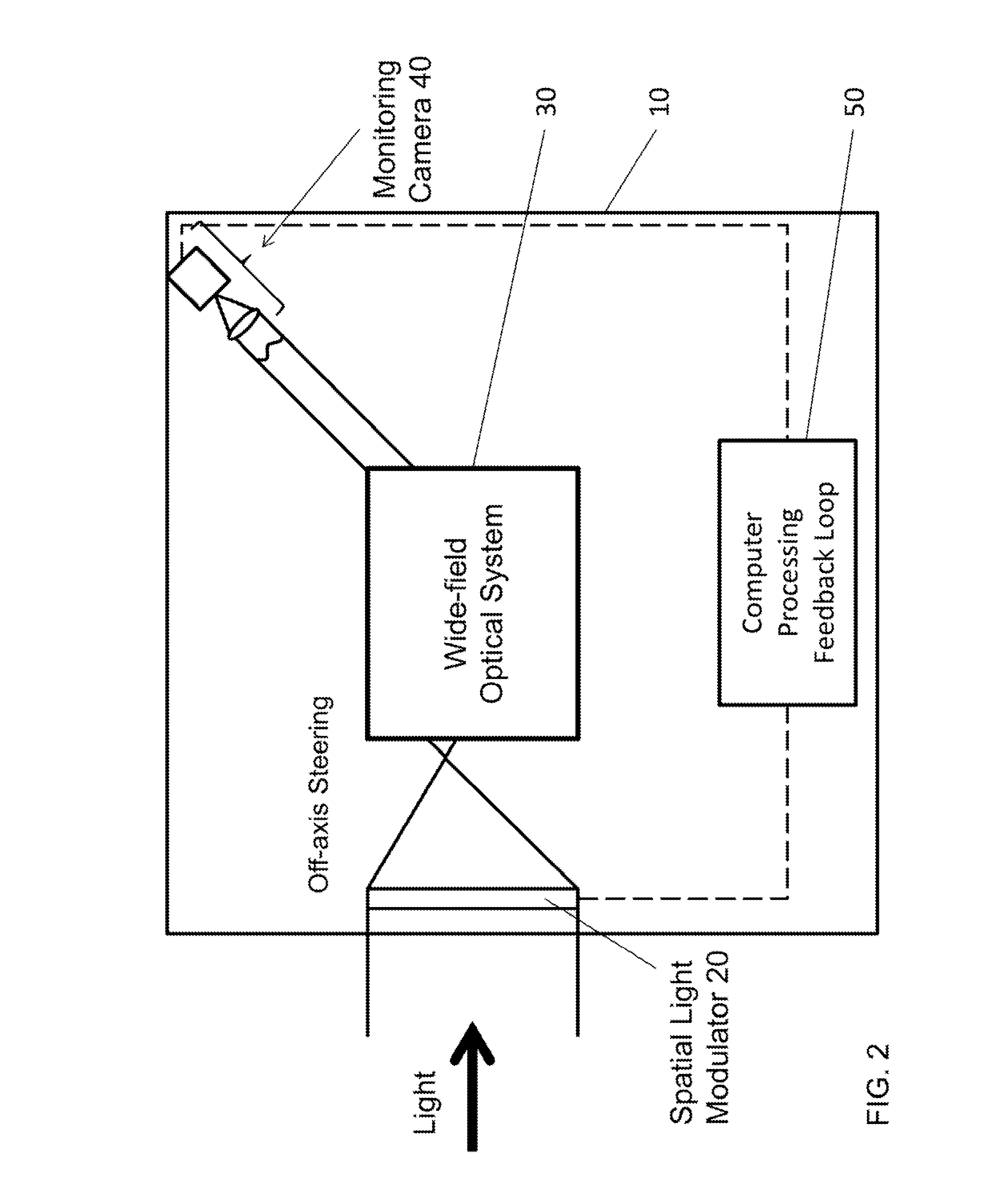Method and apparatus of simultaneous spatial light modulator beam steering and system aberration correction
a technology of beam steering and beam beam, which is applied in the field of simultaneous spatial light modulator beam steering and system aberration correction, can solve the problems of significant weight and size restrictions on the device, the laser power in the desired direction is typically not optimized, and the slm cannot be adaptively phase corrected, so as to facilitate the use of lower-cost, lower-quality optics, and eliminate the tolerable lens aberration and other problems. , the effect of simplifying the design and operation
- Summary
- Abstract
- Description
- Claims
- Application Information
AI Technical Summary
Benefits of technology
Problems solved by technology
Method used
Image
Examples
Embodiment Construction
[0017]An embodiment of the present invention includes an apparatus 10, as shown by way of illustration in FIGS. 1 and 2. The apparatus includes a standard spatial light modulator 20, a standard wide-field optical system 30, the wide-field optical system including at least one optical system aberration; and a standard camera 40. The wide-field optical system 30 collimates a light beam toward the camera 40. The camera 40 communicates with the spatial light modulator 20 via a feedback loop 50 that pre-corrects for the at least one optical system aberration. Optionally, the wide-field optical system 30 includes a front focal point, the spatial light modulator 20 steering a focused light beam to the front focal point of the wide-field optical system. Optionally, the wide-field optical system 30 angularly magnifies the steered light beam from the spatial light modulator 20.
[0018]Optionally, the spatial light modulator 20 includes a reflective spatial light modulator, a transmissive spatia...
PUM
 Login to View More
Login to View More Abstract
Description
Claims
Application Information
 Login to View More
Login to View More - R&D
- Intellectual Property
- Life Sciences
- Materials
- Tech Scout
- Unparalleled Data Quality
- Higher Quality Content
- 60% Fewer Hallucinations
Browse by: Latest US Patents, China's latest patents, Technical Efficacy Thesaurus, Application Domain, Technology Topic, Popular Technical Reports.
© 2025 PatSnap. All rights reserved.Legal|Privacy policy|Modern Slavery Act Transparency Statement|Sitemap|About US| Contact US: help@patsnap.com



